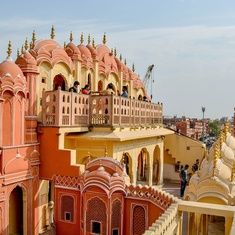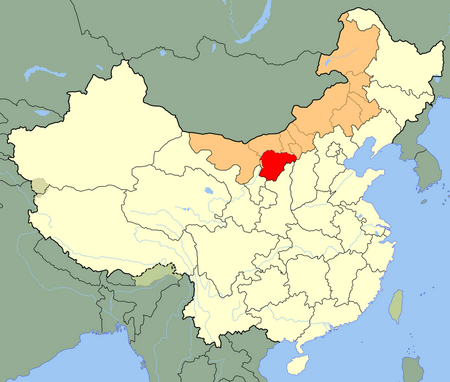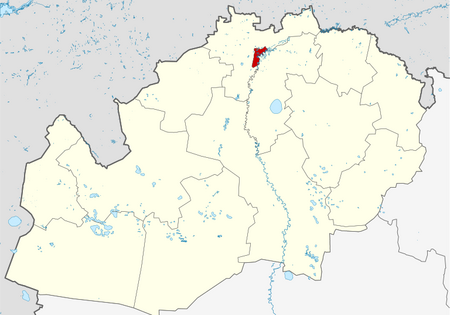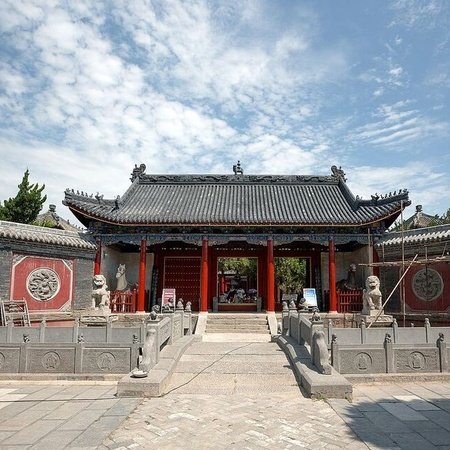
Cities by Picture and Letter
First published: Saturday November 11th, 2023
Report this blog
You might have seen that I've created a series of quizzes, from Biggest Asian "A" Cities by Picture to Biggest Asian "Z" Cities by Picture. This was inspired by similar European cities quizzes on Sporcle. I haven't played them myself, but I've seen them played on YouTube. I'm not entirely sure if it's okay to borrow the concept. So I decided to do Asia instead of Europe.
How the Quizzes Work
Each quiz has pictures of 16 cities, all beginning with the same letter. As a hint, under each picture it says how many inhabitants the city has, and there's a flag 🇱🇦 indicating which country it's located in. These are supposed to be the 16 biggest cities in Asia starting with that letter. But determining which 16 cities are actually the biggest is quite problematic, which the following section explains.

Population Statistics
An important choice to make was which population figures to choose. There's the city proper, metro area and urban area. (See the official Jetpunk blog for an explanation of the differences). Jetpunk usually uses the urban agglomerations presented at citypopulation.de for its quizzes. I didn't want to use this, because this clumps together all settlements that are very close to one another; in many cases settlements that people usually consider to be separate cities. So, some well known cities, like Shenzhen and Yokohama, would not appear at all. (They would be included under Guangzhou and Tokyo respectively.)
But I needed a somewhat reliable source of population numbers of cities all over Asia. So I used City Population, but instead of the urban agglomerations I looked at each Asian country's page and used the numbers presented there. It's a bit unclear what these numbers represent. Are they city propers, metro areas or urban areas? These are apparently numbers that have been reported by each country individually, and each country has different way of dividing up area into cities.
This means that you can't really compare cities from different countries, because their populations have not been measured using the same method. So making a top list of cities by population becomes futile. But I thought it was more important to have recognizable cities (like Shenzhen and Yokohama, instead of things akin to the Ruhr area) than to have a "fair" top list. And I don't expect people to be like "ah, this city has 2,130,000 inhabitants. Clearly it must be Aleppo". The population number is more for the sake of giving you a rough idea of how big the given city is. If it has millions of inhabitants, it's a major city, which you might come up with if you think about it hard enough. But if it's a smaller city in a country that you're not that knowledgeable about, you know not to waste too much time pondering it. The purpose of the top list is just to have some kind of criterion on which 16 cities I should include in the quiz.
Another problem I encountered was what is actually a city? City Population's statistics for China lists counties and city districts as well. I have not included the counties, but I have included the things listed as city districts. That's because when I looked at the map, some of these districts are really, really far away from the main city they're supposed to be part of. So I think any sane person would think of these as separate cities. There were also some cases where something was classified as a city, but it's area was really huge and it's population density really low. So I have also excluded the most extreme of this kind of cities.

Intercontinental Cities
There are some cities in Russia, Kazakhstan and Egypt (in the Sinai peninsula), plus Istanbul, that are on the border of Asia. I decided to only include the population that's on the Asian side. It turned out that all of the Egyptian cities were too small to be included in the quizzes, and there was only one Kazakh city that was up to consideration, but it turned out that basically all of the population lives on the European side.
Regarding the cities that were included though, it was completely impossible to find any data on how many live on which continent. At most I could find estimates on how many per cent live in Europe respectively Asia. So I used those estimates to calculate a very rough approximation of have many live in Asia.

City Names
One problem is that many cities have changed their name. For example, is it Canton or Guangzhou, Bombay or Mumbai? I've tried to follow the same conventions official Jetpunk quizzes use. But there are many cities that haven't appeared on official Jetpunk quizzes. Or which I think haven't appeared; it would be too much work to check through every city quiz. So I've used whichever name Wikipedia uses in the headline for the article about the given city.
For Chinese cities Pinyin romanization has mostly been used. The exceptions are some cities with Manchu or Mongolian names. For example I've used the name Hohhot, even though there is a Mandarin Chinese name: Hūhéhàotè. But then I've used the Chinese name Shěnyáng instead of Manchu Mukden, because Shenyang is the headline on Wikipedia.
India has a lot of cities that have changed their name relatively recently. I got the impression that this was especially common in Dravidian speaking areas, like Telangana, Tamil Nadu and Kerala. This was confusing to me, because I've learned these cities by their old names, and didn't even know they've changed. I've allowed the old names as type-ins, but when the new name doesn't begin with the same letter, I think a lot of people will have problems with these.
I have opted to use diacritical marks (like ¯, ˇ, ´) even if they are commonly not used in English. But only if the diacritical mark is the only difference from the established English name. This is because it annoys me a lot when people leave out the ˚ or ¨ from Swedish and Finnish names, so I assume others are also bothered when it's done to their language. City Population uses diacritics, but I've discovered they are inconsistent when it comes to Indian cities. They use ¯ (macron) for denoting long vowels, but they skip . (dot below), which is for marking retroflex consonants. So there might be small errors in my quizzes.
Time Limit
The current time limit is three minutes. That makes 11.25 seconds per question. I wonder if that's enough. One might think that difficult quizzes should have a lot of time, but it's not certain that you will be able to get that many more answers with a lot more time on hand. If you spend the last few minutes of the quiz trying to come up with answers without getting any, it makes for a boring quiz.
Difficulty Otherwise
So how hard are these quizzes? Unfortunately most of them ended up being very hard. One problem is that they're dominated by Chinese cities that no one's ever heard of. Of the 416 cities featured in this series, 187 are Chinese. That's almost 45 per cent.
I can give one hint. Chinese city names usually consist of two syllables. Try to memorize what kind of syllables they often end with. There's for example -zhou, -yang and -chang. Then try to figure out what kind of initial syllables there may be, considering the starting letter, and just try all permutations of syllable combinations.
If you want to try the easiest quizzes, I can recommend A, B, C, H, K, M and S.

Going Forward
I'm currently making a Finnish version of this series. The answers are mostly the same as in English. However, many of the cities that begin with Y in English begin with J in Finnish. Then I'm going to do a Swedish version. I'm thinking of maybe having 20 cities per quiz in the Swedish version. Though I wonder if that'll only add unnecessary difficulty.
I think I'll also do other continents later. I think I'll start with North America, because that will probably be the least difficult continent. (Though I expect USA to be the China of North America, having a massive amount of cities. A bunch of them will be well-known, but I bet there will be lots of cities no one's heard of.)

